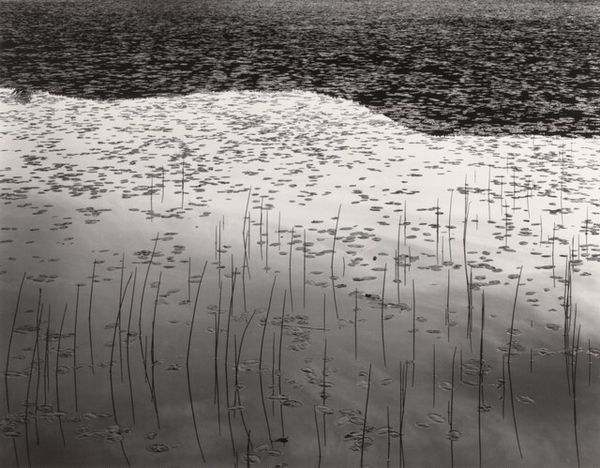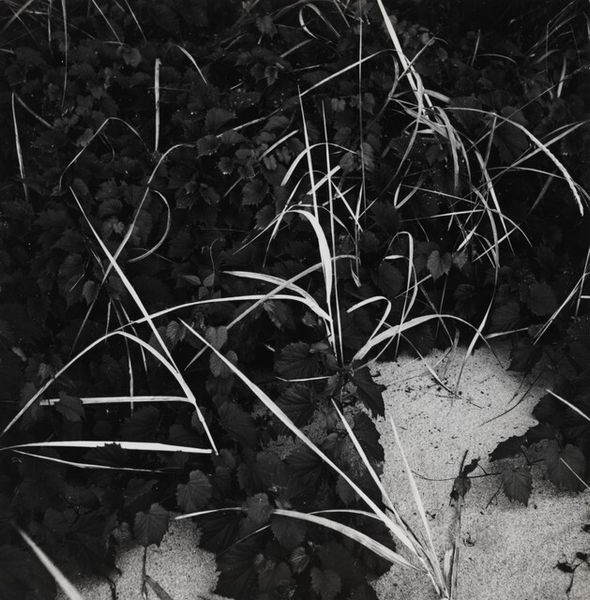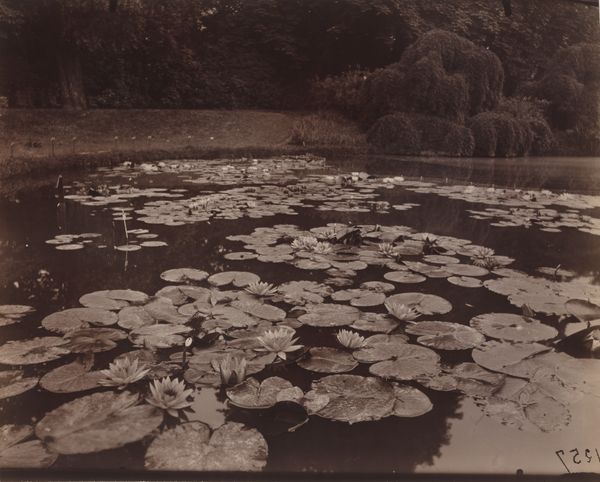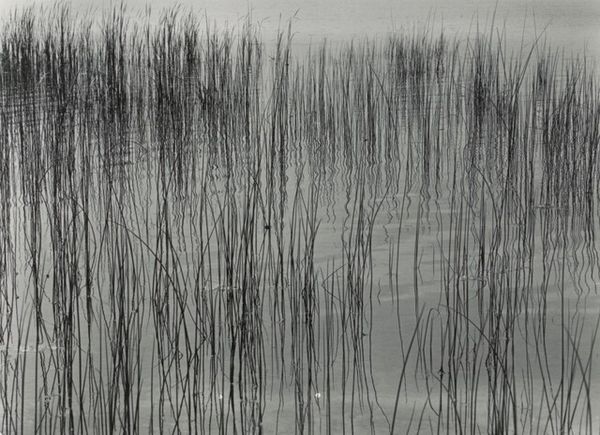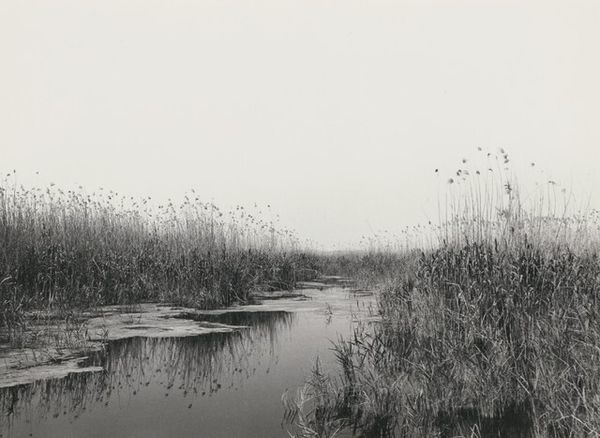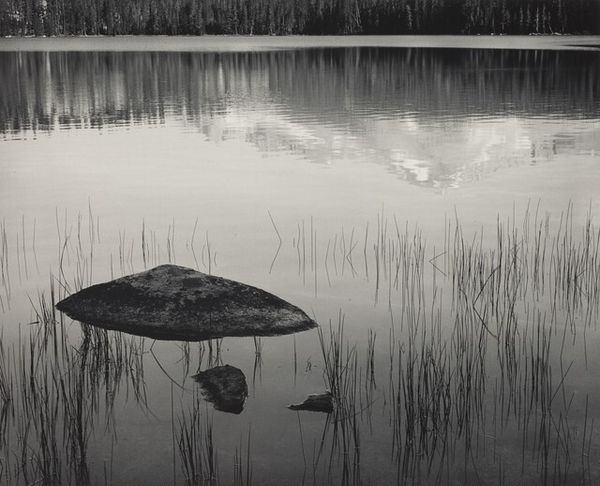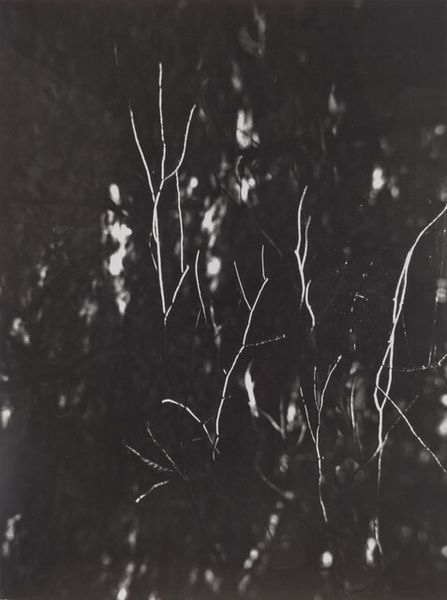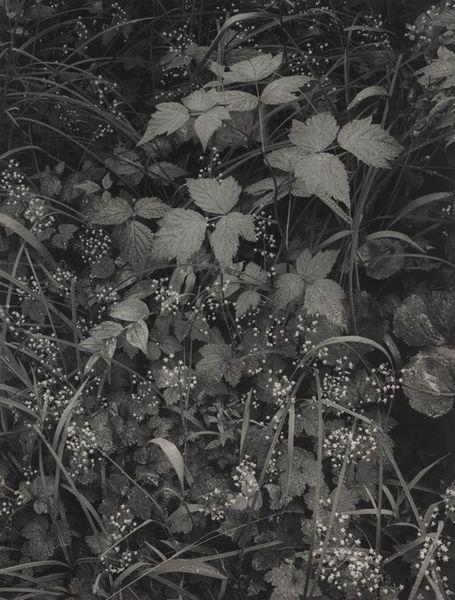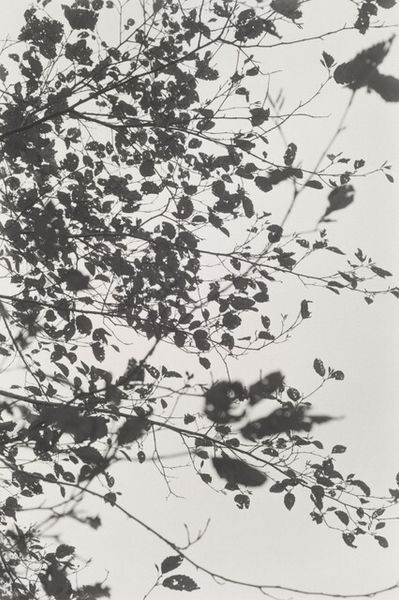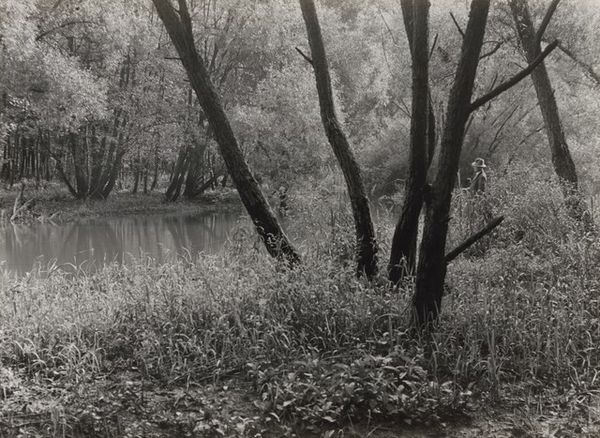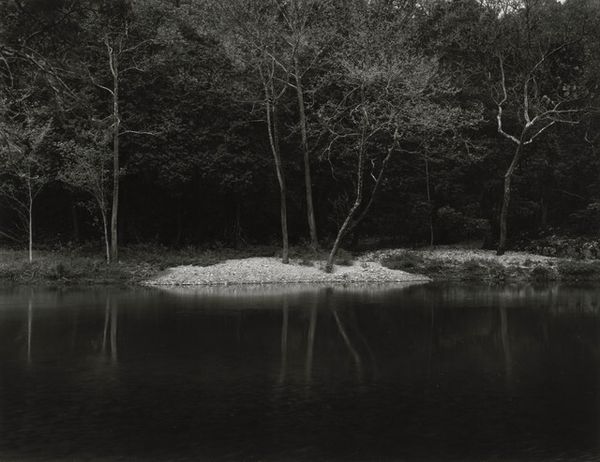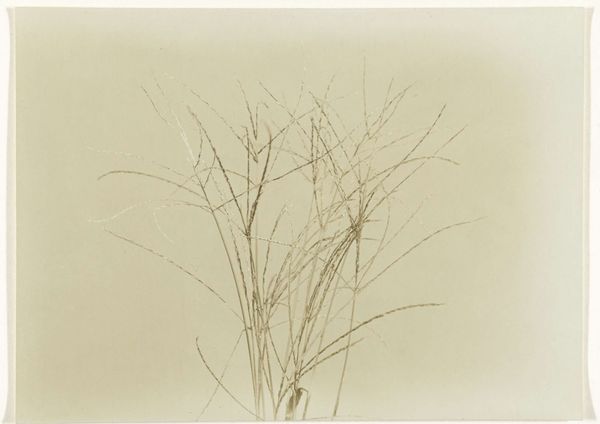
photography, gelatin-silver-print
#
still-life-photography
#
black and white photography
#
pictorialism
#
sculpture
#
landscape
#
photography
#
gelatin-silver-print
#
monochrome photography
#
monochrome
#
monochrome
Dimensions: image: 9.1 x 6.9 cm (3 9/16 x 2 11/16 in.) sheet: 25.1 x 20 cm (9 7/8 x 7 7/8 in.)
Copyright: National Gallery of Art: CC0 1.0
Curator: Looking at "Water Lily Pond, Ashumet Farm, Hatchville," a 1932 gelatin-silver print by Dorothy Norman, my immediate impression is one of quiet meditation. The monochrome tones give it a timeless quality, almost like a memory captured in light and shadow. Editor: Indeed. I see something both peaceful and almost unsettling. The dark reeds standing sentinel amidst the water lilies evoke a sense of enclosure. Norman presents the natural world not just as something beautiful, but as a space with its own inherent power dynamics and social history. Curator: Exactly! Water lilies, since ancient Egypt, symbolize creation and rebirth, and these plants push through murky water to blossom – representing spiritual ascent. Norman, given her deep interest in spiritual philosophies and Eastern thought, surely played with this symbolism. Editor: I'm intrigued by the choice of Ashumet Farm, Hatchville, as the site. How might this specific location contribute to the overall meaning? Farms at that time reflected broader socio-economic changes; consider the impact of the Great Depression and evolving rural life. Does it mirror controlled nature? Curator: Interesting. Beyond those tensions of environment and economy, let’s focus on the lily pads themselves, a flattened landscape upon which the delicate lily flowers perch. In many cultures, the lotus, closely related to the water lily, appears in the context of purity. By photographing at this specific locale, is Norman reinterpreting what sacredness truly entails? Editor: The soft focus further obscures a documentary approach, pushing it towards personal expression. Norman, even whilst embracing Modernist principles, seems aware that landscape has always been politically loaded in art, conveying ideologies tied to nation and ownership. Curator: It brings us back to that unsettling element you felt initially, doesn't it? There’s more here than first meets the eye: those shadows playing against the water lilies imply something latent and possibly enigmatic hidden beneath the tranquil surface. Editor: Ultimately, Norman uses familiar pastoral imagery to address pressing historical and perhaps psychological concerns. By looking closer, we reveal art’s purpose in expressing complex truths, reflecting the anxieties that affect even our vision of beauty.
Comments
No comments
Be the first to comment and join the conversation on the ultimate creative platform.
